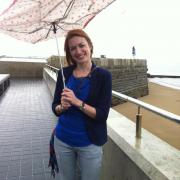Natural History Museums are often imagined to be traditional repositories of historical collections. They continue to draw millions of visitors each year and are family favorites owing to the weird and wonderful collections. These museums remain a nostalgic wonder in the memories of many adults. In this session, we will explore the relationship between learning, science, architecture and design in natural history museums.
As visitor expectations and technology evolve at a fast rate, how is the design of museum spaces responding to this? What impact does the architecture and the physicality of a space have on the visitor experience? What role do the key iconic spaces within these museums play in not only welcoming visitors to natural history collections but in engaging them with social issues?
In this session we aim to discuss a range of different spaces, from the old to the new, in particular the natural history museums of London, Barcelona and Berlin. But the discussion, led by Claes Johansson, an architect based at CaseStudio AB, Gothenburg, Sweden, will be relevant to all venues. A broader discussion with the audience will include: • The changing aesthetic of museum spaces • The role of iconic museum spaces for cities and as part of the everyday lives of people • Permeability between what the public sees, what the scientists do and what curators collect
Facilitator
Session speakers
Session speakers
No speakers have been added yet.


